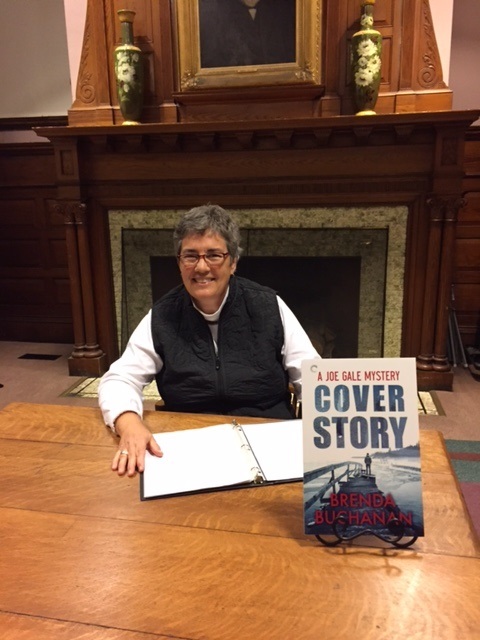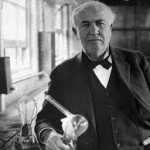Lea Wait's Blog, page 277
November 1, 2015
November
Lea Wait, here. And I’m grumbling that it’s November.
True, Maine enjoyed a glorious summer. Our only complaint was that some days were a bit too hot and humid. (Only people in New England would complain about temperatures in the high 80s.)
Our fall has been equally beautiful … and it has lasted. Spectacular color, cool-but-not-cold days, and leaves still on some trees.
But now it’s November. Day light savings is in effect, which means the sunsets we enjoyed at 8:30 last summer will now be at 4:30. We’re nearing the shortest and darkest days of the year.
The outside water has been turned off, the bird bath put in the barn. The porch furniture is now inside, and our supplies of biobricks and wood fill the barn, to fuel the wood stove in Bob’s studio.
Storm windows and doors are in place. Balsam-filled “snakes’ are on window sills and in front of doors to help deflect winter winds.
Holidays are taking over. We just survived Halloween. (Sorry – all you witches and vampires and Trumps — it’s not my favorite day of the year.) Pumpkins and scarecrows are everywhere, and turkeys will soon be on sale in supermarkets, as well as parading across the lawn. Thanksgiving is the enemy of perpetual dieters like my husband and me. (Not that we diet then .. but we do feel slightly guilty!)

“Snake” in place
And then there’s Christmas. Since I’m married to a grinch and my children and grandchildren live far from Maine, I shop all year long, sort what I’ve found in September, and wrap in October. Right now I’m close to finishing the wrapping and have already prepared five or six cartons for mailing. There won’t be much more to do for Christmas except hang wreaths and maybe decorate a small Christmas tree. (With family miles away, there’s no excuse for baking. Unfortunately!)
 What will November be this year for me? I’ve already spent November 1 sharing a booth at a craft fair in Waterville with Kathy Emerson, where we sold our books and caught up on writerly gossip. Next weekend, November 6-8, I’ll be (along with most of the other Maine Crime Writers) at Crime Bake, a mystery conference in Medford, Massachusetts. On November 14 I’ll be speaking at Maine Coast Books in Damariscotta at 11. And November 19-22 I’ll be at Studio 53 in Boothbay Harbor with other writers, artists, and craftsmen, selling our wares to Christmas shoppers.
What will November be this year for me? I’ve already spent November 1 sharing a booth at a craft fair in Waterville with Kathy Emerson, where we sold our books and caught up on writerly gossip. Next weekend, November 6-8, I’ll be (along with most of the other Maine Crime Writers) at Crime Bake, a mystery conference in Medford, Massachusetts. On November 14 I’ll be speaking at Maine Coast Books in Damariscotta at 11. And November 19-22 I’ll be at Studio 53 in Boothbay Harbor with other writers, artists, and craftsmen, selling our wares to Christmas shoppers.
All fun, if exhausting, activities!
And somewhere in between those dates, and after, I’ll be writing. My next book (the 4th in the Mainely Needlepoint series) is due to my editor January 4. (I’ve already asked for an extension — it was originally due December 1.) And Bob will be painting. We may watch a NetFlix movie early in the evening instead of watching a sunset.
We’ll hunker down.
Because, beginning December 20, the days will start getting longer.
And that’s always something to celebrate.
Lea Wait writes the Shadows Antique Print Mystery series (the most recent of which is Shadows on a Maine Christmas) and the Mainely Needlepoint series (the most recent of which is Threads of Evidence.) Her Uncertain Glory and Finest Kind, historical novels for ages 8-14, have just been issued in paperback.
October 30, 2015
Weekend Update: October 31-November 1, 2015
 Next week at Maine Crime Writers there will be posts by Lea Wait (Monday), Barb Ross (Tuesday), John Clark (Wednesday), Kate Flora (Thursday) and Kaitlyn Dunnett/Kathy Lynn Emerson (Friday).
Next week at Maine Crime Writers there will be posts by Lea Wait (Monday), Barb Ross (Tuesday), John Clark (Wednesday), Kate Flora (Thursday) and Kaitlyn Dunnett/Kathy Lynn Emerson (Friday).
In the news department, here’s what’s happening with some of us who blog regularly at Maine Crime Writers:
from Kaitlyn Dunnett/Kathy Lynn Emerson: The next Kathy Emerson, Murder in the Merchant’s Hall, will be out December 1 but if you’d like a chance to win an early copy, I’m doing a giveaway at Goodreads until November 9. Here’s the link: https://www.goodreads.com/book/show/26265846-murder-in-the-merchant-s-hall
Meanwhile, this very weekend, (Saturday, October 31 from 10-5 and Sunday, November 1 from 10-3), Lea Wait and I will have a booth at the REM Craft Fair being held at 30 Elm Plaza (Champion’s Fitness Center) in Waterville, Maine. There will be about sixty dealers but we’ll be the only writers. Great place to get a head start on your Christmas shopping!
Lea Wait: My UNCERTAIN GLORY has just been published in paperback, in case anyone has been awaiting that day! And I just found out that my FINEST KIND will also be out in paperback about November 13. Just in time for holiday giving! (Those are both historical novels set in 19th century Maine.)
Brenda Buchanan has been out and about, talking about Cover Story, the second book in her Joe Gale Mystery Series. Last weekend she was over at the Local Buzz in Cape Elizabeth and at Walker Memorial Library in Westbrook. Next Thursday, November 5th, she will be on Peaks Island, reading and visiting at the library from 6 – 7 p.m.

Brenda in the historic Gathering Room at Walker Memorial Library in Westbrook
An invitation to readers of this blog: Do you have news relating to Maine, Crime, or Writing? We’d love to hear from you. Just comment below to share.
And a reminder: If your library, school, or organization is looking for a speaker, we are often available to talk about the writing process, research, where we get our ideas, and other mysteries of the business. Contact Kate Flora: mailto: kateflora@gmail.com
Centipedes of the Mind, or Forget Fiction, Reality has Quite A Bite.

Grimmy in Wilton says hello.
Happy Halloween from the MCW Crew!
John Clark sharing an accumulation of things blog members and librarians passed on to me that have scared them spitless at some point in their life. We start off with Sister Kate Flora’s account of a gift gone really bad.

Not an exact match, but you get the idea.
Well, I’m one of those people who are easily scared, so I generally don’t take risks or read scary books. But here’s the moment when I thought for sure I was going to die. For his 40th birthday, I gave my more adventurous husband a hot air balloon ride. His birthday is in January, but the months ticked past, and finally in November, we heard from Mario, the balloon man, that the gift certificate was about to expire and he needed to take that ride.
We met up with Mario and his crew in a park in Worcester, Massachusetts, and at that point, my husband declared that he wanted me to go with him. Have I mentioned that I’m scared of heights? But I obligingly climbed into a basket about the size of a shower stall, with three other riders, four propane tanks, and Mario. And found that the basket didn’t even reach my waist. I nearly died of heart failure. Then Mario gave the balloon some hot air, his crew leaped off, and we popped up into the air and began to float silently over the city. People couldn’t hear us but the dogs went crazy. I reminded myself to breathe. There was no place to go.
As we floated, and the car that would pick us up followed on the streets below, Mario got increasingly agitated. It seemed that an unexpected storm system had come up, the wind was rising, and it became vital that he land the balloon as quickly as possible. It was clear that had he known about the storm, he would have canceled the ride. Now I was standing in a flimsy basket with four propane tanks, a balloon making a huge sail above us, the wind driving us relentlessly along, and Mario was frantically trying to land in an open field. Beyond the field was a sort of frozen lake.
And the balloon wouldn’t stop. The wind was pulling us along, half sideways, bouncing off the ground and into the air, right toward the lake.
As we crouched in our corners, terrified, Mario stood tall, trying to re-inflate the balloon. Blast after blast of fire and hot air. With a monumental effort, Mario got the balloon inflated enough so that we hopped over the lake, landing sideways in the next field, where we were dragged along for a while–shaken, not stirred–before the balloon finally stopped.
We all crept out of the basket, uncertain whether we were alive or dead. The balloon was torn. The field had recently been burned and we were all bruised and blackened. My husband’s camera and glasses were gone. I’d lost my hat. And Mario was bleeding from a great gash on his face.
In the van that was to take us back to our car, the celebratory champagne became medicinal, and despite our disheveled appearance, blackened hands and faces, and torn clothes, we headed for the nearest bar.

Some academics just don’t know when to retire.
Trish checks in with a hint at ghosties in an academic setting: “Not sure if this is scary enough but I have seen other presences both here at COA (College of the Atlantic) and in-town Bar Harbor. There are the feelings I’ve gotten going to the third floor of Turrets at night. (I don’t do that anymore.) Then there are the ghosts of COA… which I could dredge up stories….”
From Sandy Schmitz who is on the Maine Library listserv, but in California. “This happened about thirteen years ago. At that time I owned an older house in Oakland where I lived alone with my cat (a black cat, if that matters). One night I went to bed, leaving three bottles of bubble bath lined up on the sill of the bathroom window. The bottles were small, but since they were full, each bottle weighed about 8 ounces. They were lined up side by side along the sill, but not quite touching–there was less than a quarter inch of space between each bottle and its neighbor. It was a peaceful night, quiet and calm, and I fell asleep quickly.
About 1 AM I awoke for no apparent reason. A couple minutes later I heard a loud thunk just outside my bedroom door, as if something solid had fallen onto the floor. I assumed my cat had knocked something over, until I opened my eyes and saw that she was curled up beside my pillow. She had heard the noise too; her head was raised and she was looking at the bedroom doorway. I lay awake for about an hour but, hearing no further noises, went back to sleep.
The next morning, I discovered what had made the middle-of-the-night noise. It was the middle bottle of the three bottles of bubble bath. Somehow it had left the windowsill, flown ten feet across the bathroom, through the bathroom door, and landed on the floor just outside my bedroom. The other two bottles, which had been less than a quarter inch from it on either side, were undisturbed. I had checked that the doors and windows were closed and locked before I retired for the night, and the next morning found no indication of a break-in. USGS reported no earthquakes in Northern California. I have no explanation for what happened that night.”
(I had a similar experience in a Tempe, AZ. Bar while in college, saw an ashtray fly across the room to break up a fight and no one was within ten feet of it.)
From another librarian who wants to remain anonymous: “I have known not one, but two murderers. When I was a senior in HS a fellow drummer murdered a young girl. He had been practicing satanism, which we all knew, but when you are a teen you consider it a fad, not life threatening. The Monday following the discovery of the body we were hanging around together and he acted like nothing had happened. The trial continued through my Freshman year of college and was on the news almost every night.
So good readers, what chains clank in your reality? Inquiring readers want to know.
October 28, 2015
NaNoWriMo – a month of lovely obsession
(Note from Kate Flora: This is a revision of a post that has run before, with tweaks and links, etc.) But with NaNoWriMo coming fast upon us, we wanted to run it again in case you missed it and want to start gearing up for this November)
OBSESSION: Compulsive preoccupation with a fixed idea or an unwanted feeling or emotion, often accompanied by symptoms of anxiety. (American Heritage Dictionary)
One of the lovely dark sides of the writing life is obsession. This November, many writers will nurture (or yield to) this obsession. November is National Novel Writing Month, or NaNoWriMo, (http://www.nanowrimo.org/) a period during which writers all over the world sign up and commit to trying to write a 50,000 word novel during the month. Some get together in weekly support groups, or go to weekly “write-ins.” Some are supported throughout the month by a series of rallying e-mails from their local organizers. Some toil quietly in the stillness of their homes or the commotion of their local coffee shops.The project began in 2000 with 140 participants, 26 of whom met the goal.
In 2014:
325,142 participants, including 81,311 students and educators in the Young Writers Program, started the month as auto mechanics, out-of-work actors, and middle school English teachers. They walked away novelists.
803 volunteer Municipal Liaisons guided 615 regions on six continents.
849 libraries, bookstores, and community centers opened their doors to novelists through the Come Write In program.
55,774 Campers tackled a writing project—novel or not—at Camp NaNoWriMo.
Over 250 NaNoWriMo novels have been traditionally published. They include Sara Gruen’s Water for Elephants, Erin Morgenstern’s The Night Circus, Hugh Howey’s Wool, Rainbow Rowell’s Fangirl, Jason Hough’s The Darwin Elevator, and Marissa Meyer’s Cinder. See a full list of our published authors. http://nanowrimo.org/published-wrimos
The thing has gotten big enough that it has prompted a lot of discussion, including a column by Salon’s Laura Miller titled: Better yet, DON’T write that novel, http://www.salon.com/2010/11/02/nanowrimo/ in which she opined that the world doesn’t really need more writers, especially writers who are writing so intensely they’re “writing a lot of crap” and ignoring the need for revision. Instead it should celebrate readers. That, in turn, prompted Carolyn Kellogg, at the LA Times, to counter with: 12 Reasons to ignore the naysayers: Do NaNoWriMo. http://latimesblogs.latimes.com/jacketcopy/2010/11/12-reasons-to-ignore-the-naysayers-do-nanowrimo.html

Happily obsessive or in need of a tin foil hat?
Maybe others will think I should be wearing a tin foil hat, but I’m with Carolyn Kellogg. However a writer chooses to approach NaNoWriMo, there’s an incredible energy in the air that can be captured and channeled. It’s exciting to be part of a “movement” where more than 200,000 people are setting aside the complex demands of their lives and giving themselves over to a long held-dream, or a voice that won’t take “no” for answer. And the result, for some of us, is obsession, in the best possible sense of the word. Yes, a compulsive preoccupation. Yes, quite possibly accompanied by feelings of anxiety–though often those are the result of trying to figure out how to put the rest of life on hold or how not to burn the chicken when you haven’t met your daily word goal. And yes, perhaps almost impossible to do–but ultimately, the task is about jump starting, it’s about taking a turn down the to road of creativity. It’s about getting so deeply into story that those editing voices in our heads, the result of a lifetime of correction and discipline, are stilled, and the words just flow. For once, it’s possible to believe that it can all be edited and revised later, because there’s no time to stop. Fingers are flying, words are flying, there’s only time to get it down on the page.
I did NaNoWriMo five years ago and it was amazing. True confessions: First, I only got to about 42,000 words; Second, I broke the rules and used the time to try and finish a book I’d started and then hit the pause button on nearly a decade earlier. But since this is only about a writer’s personal relationship with the page, that’s okay. I’m the writer. You’re the writer. We’re using this as a device. This is NOT our homework, it is our life’s work, our dream work, our step-out-on-the-tightrope-and-see-what-happens work. Our writing, and the decisions about how to approach it, always, first and foremost, belongs to us.
So what did I learn from my NaNoWriMo adventure? First, that it should probably take place in February. November is an impossible month. I’m helping to run a huge weekend-long mystery writing conference, The New England Crime Bake. I’m teaching other mystery writers. I have a book to finish before I can start NaNoWriMo. But I’m not going to let any of that stand in my way.

And when you’re writing obsessively, you are there when lightning strikes!
Why? Because what I rediscovered when I did it before, something I knew from a long-ago stint to see how fast I could write a book (485 pages in 3 months), is that the upside of obsession is something akin to ecstasy. There’s something almost breathtaking about getting so deeply immersed in story and character that they begin to write themselves. There is a kind of magic in being in what some writers call “flow,” where the story just comes pouring out. Where characters are so freed to be themselves that they just start talking and we writers almost break our fingers as we try to write it down. Being that deeply in story is a high like no other that I’ve ever experienced (and since I may still run for political office, I’ll leave it right there). And quite honestly, as I sit here at my desk and look at my to-do list and my calendar, the passionate writer in me can hardly wait to shove everything else aside and write: Chapter One.
50,000 words. 1,666 words a day. I hope you’ll be joining me.
For some nitty gritty details and advice, check out guest blogger Steve Liskow’s post in our archives:
NaNoWriMo 101 or Some Planning Tips for Writing in November
And for other thoughts, blogs, ideas, and suggestions about tackling NaNoWriMo, here are some links:
Chuck Wendig on the Pros and Cons: http://bit.ly/1H8BeRD
Annie J. Kelley on getting some ideas: http://bcene.ws/1RyaYWl
Robin Rivera: A Writer’s Ode to her Inner Critic: http://writeonsisters.com/writers-life/a-writers-ode-to-her-inner-critic/ (We don’t know if his name is Carlisle)
Finally, a so painfully close to the truth, is this blog post from Chicks on the Case:
How Not to win NaNoWriMo
http://chicksonthecase.com/2015/10/26/how-not-to-win-nanowrimo/
October 27, 2015
A Vibrant Tapestry of Contentment

Bigelow Range
Bruce Coffin: A few weeks back, I spent a glorious sun-filled autumn day hiking in the western part of Maine along the Bigelow Mountain Range. The route I’d picked allowed me to cross yet another section of the legendary Appalachian Trail off my list. I’ve been tallying up sections as I complete them, determined to walk every inch of the 282 miles of trail running through the Pine Tree State. While Maine can only lay claim to about twelve percent of the entire trail, it possesses some of the most picturesque and rugged terrain to be found among the thirteen states through which the AT passes.
As always, I try and plan the majority of my fall treks during the height of foliage season, when deciduous trees dress up like starlets at a Hollywood premier and forests resemble an artist’s pallet. Maples are cloaked in breathtaking hues of orange and crimson, while oaks, elms, and birches don magnificent lemony yellows and golds. Warm autumn colors brilliantly juxtaposed with the cooler blue-green shades of pine, hemlock and spruce.

Bigelow Foliage
It’s difficult to convey in words the thrill that comes from lacing up a pair of well-worn boots and heading out into the Maine wilderness. Hiking during any season of the year can inspire, but autumn even more so. Dawn arrives, crisp and invigorating. Fallen leaves, coated with frost, blanket the path before me. The sun gradually warms the air as woodland creatures scamper about, and distant foothills morph from lavender into a fiery patchwork under cerulean skies. The scent of balsam, conjuring wonderful holiday memories, overpowers each breath. Roots, crisscrossing the trail, playfully grab at the soles of my boots, a constant reminder that I am merely a visitor here.
Admittedly, hiking is a little harder on my body than it was twenty years ago. I have to work much harder at the local gym to stay in trail shape. Much like life itself, hiking requires perseverance, the ability to forge ahead even when you don’t think you can. Mountains seem infinitely taller in person. A mile on the trail can easily seem like five. Legs feel like rubber, knees ache, and your pulse races. The payoff, of course, comes at the pinnacle of each mountain, where I pause to rest on a stone outcropping or ledge, letting the sun warm my face. I drink in both the cool water from my camelback and the magnificent view. A sprawling unmarred vista reminds me just how great it is to live in the Pine Tree State.

Horns Pond
And so, I return every fall, crossing paths with like-minded people of all ages and all walks of life, each of us in pursuit of nature’s gift, a vibrant tapestry of contentment and fulfillment, a recharging of the soul.
Have you hiked any of Maine’s Appalachian Trail? If not, what’s stopping you?
October 26, 2015
Selling a book? The number one tip to success for writers.
Maureen Milliken here. One of my favorite quotes is from Thomas Edison: “Opportunity is missed by most people because it’s dressed in overalls and looks like work.”
I remind myself of that often, because the point is that no matter how brilliant and talented you are — even Thomas Edison! — you have to work it.

Even Thomas Edison couldn’t sit around being all talented and waiting for opportunity to come to him.
This is something writers sometimes forget once their book is published. They worked so hard to get there (at least most of them did, but that’s a blog for another day), that they want to relax and rest on their laurels. Well, for most of us, there really are no laurels. At least in the conventional sense.
Saturday, I drove down to Boston to spend one hour at the Sisters in Crime New England booth at the Boston Book Festival. It was a six-hour round trip, and since I didn’t want to try to find the one parking garage that would take the BBF voucher, it also included a 20-30 minute ride on the T — carrying a box of books that I knew would probably be almost as heavy on the return trip.
An acquaintance pointed out that I needed to sell a certain amount of books to even cover the gas, and even more to make it “worthwhile.” Technically the gas part is true.
But the worthwhile part?
I’ll add to Edison’s quote that not only don’t we recognize opportunity when it’s in front of us, but we also expect it to come knocking. Possibly because someone a long time ago coined that phrase then left it there for us to believe was reality. But how often does it really come knocking for people like me and you? You got it. Rarely, if ever. You have to go out and hunt it down, and it’s going to be wearing camo and hiding behind a tree.
When I began my career as a journalist more than 30 years ago, I vowed to never say no to an opportunity when it did come knocking. I carried that into my recent and brief (thankfully!) sub-career as a freelance editor. And now I have the same philosophy as a recently published author — a sub-career that I hope will carry me through the final decades of my life. And the thing about opportunities “knocking” is that you have to, as Edison pointed out, recognize them. And realize the knock isn’t going to be on your front door and isn’t going to be accompanied by another hand clutching a big bundle of cash for you.
My feeling about that trip to Boston is if I sold any books, great. But it was about more than that. It was about getting out there, meeting people and talking writing, books — my book and other people’s. It was about showing up. Another wise and talented person (it’s credited to everyone from Woody Allen to Mario Cuomo, but you get the idea, someone witty and wise) is that a certain percentage (80, 99, 50, whatever) of life is showing up. That’s certainly true for selling your book.

Whoa! Someone likes my book. Fellow writer John Radosta stops by to say hi at the 2015 Boston Book Festival.
Some of that can be done from the comfort of your living room. The Internet has made it possible for people like you and me and my small publisher to get the book out there, to blog (like this!), tweet, Facebook, email, sell online, hope people blog about you, review you on Amazon, add you to their Goodreads list.
But you gotta show up in person, too. I always feel that I never know what conversation I have, what postcard I give out, what book I sell, is going to make a difference. And on top of that, every single person I talk to and event I attend builds a foundation. I’m not going to go home and find that I sold 500 books on Amazon after an event, or see a review of my book in People magazine. I know that. The benefits of the event, though, will show themselves in ways big and small.
I have never gone to an event and regretted it. In fact most of them not only boosted me as a writer, but as a person. I feel lucky to have the opportunity, no matter what it was wearing.
And speaking of opportunity, I’m on my way today to the New England Library Association Conference, another six-hour round trip. By the time you read this, who knows who I may have talked to? Who may have taken a look at my book and loved it? I can’t wait.
Because who am I to overlook an opportunity?
Maureen Milliken is the author of Cold Hard News, the first in the Bernie O’Dea series. She is also a newspaper editor in central Maine. Follow her on twitter at MMIlliken47, check out her Facebook page, Maureen Milliken mysteries. Thanks for reading!
October 25, 2015
Negotiating
Jessie: In a tiny village surrounded by leaf piles
If you get a bunch of writers together and wait for the conversation to scratch down to the things that matter it becomes clear that we all have something in common: a challenging relationship with the dreaded inner critic. The critic pops up during every project and hisses dispiriting counsel into all writers’ ears. I call mine Carlisle.
Early in my career I took a workshop on creativity at the New England Crime Bake facilitated by author Shelley Carson, PhD. In it I learned that all creative projects work through a series of predictable stages and that these stages use different parts of the brain.
It turns out that the creativity needed to make interesting connections and create early drafts of a novel is cooked up in a totally different part of the brain than is critical evaluation. This explains the creative paralysis that occurs whenever the critic tries to weigh in on the work too early in the process.
As I started thinking about my brain as divided into different chunks that governed different aspect of my work it occurred to me that I could treat these parts as a team of employees who all had a role to play in getting the job done. This is how Carlisle came into being. Giving the critical, evaluating part of my brain its own personality and a clear set of responsibilities has made a significant difference in my productivity and how much I enjoy writing.
Now, whenever I start a project and I hear Carlisle begin to whisper and then to shout that I am attempting too much, the words are wrong, the idea is a dud, I address him by name and acknowledge the value he brings to the team. I mention how much I appreciate his concern for my reputation and how important his rigorous scrutiny is for the overall quality of any venture. Then I remind him that there will be nothing for him to evaluate if he doesn’t let the other sections of my brain do their jobs too. I promise I won’t ever send anything off to my editor without him having a thorough crack at it first. Then I send him to the break room for a cup of tea and a nap.
I can’t say he never pops back up to lurk over my shoulder before I am ready to welcome him but I but I can say it happens less and less often. I think it’s because he doesn’t need to say increasing unkind things, at greater and greater volume, to capture my attention. When I stick to my side of the bargain he tends to uphold his too.
Another, unexpected benefit of this way of thinking is my own attitude towards Carlisle’s criticism once I’ve reached the revision stage. It turns out that when he participates at the right point in the writing process I feel as though I have the expert help of a trusted friend and invaluable ally. I love revisions now and actually find them easier than the first draft.
Perhaps all this makes me crazy but it’s a pleasant sort of insanity. I’d love to hear how you manage your inner critic. Do you name it? Avoid it? Stick your fingers in your ears and hum?
October 23, 2015
Weekend Update: October 24-25, 2015
 Next week at Maine Crime Writers there will be posts by Jessie Crockett (Monday), Maureen Milliken (Tuesday), and Bruce Coffin (Wednesday), with a guest post on Thursday and a special Halloween guest post on Friday.
Next week at Maine Crime Writers there will be posts by Jessie Crockett (Monday), Maureen Milliken (Tuesday), and Bruce Coffin (Wednesday), with a guest post on Thursday and a special Halloween guest post on Friday.
In the news department, here’s what’s happening with some of us who blog regularly at Maine Crime Writers:
from Kaitlyn Dunnett/Kathy Lynn Emerson: The Scottie Barked at Midnight will be in stores and available as an ebook on Tuesday, October 27 and I’ll be guest blogging at Jungle Red and Dru’s Book Musings next week.
On Saturday, October 31 from 10-5 and Sunday, November 1 from 10-3, Lea Wait and I will have a booth at the REM Craft Fair being held at 30 Elm Plaza (Champion’s Fitness Center) in Waterville, Maine. There will be about sixty dealers but we’ll be the only writers. Sounds lke a perfect place to start your Christmas shopping!
From Barb Ross: Finally, post knee replacement, I am sprung, at least for a little bit. On Saturday I’ll be signing and selling books at the Sisters in Crime New England Booth (#32) at the Boston Book Festival. On Monday, October 26, from 12:30 to 2:30, I’ll be signing and giving away books in the Sisters in Crime New England booth at the New England Library Association Annual Conference in Manchester, NH.
From Lea Wait: Looking forward to spending next weekend with Kathy in Waterville! And just a note that my Uncertain Glory has just been released in paperback … in time for classroom copies and Christmas gifts! (Uncertain Glory is my book about a boy who published the town’s newspaper in Wiscasset, Maine in the mid-19th century, and is set during the first two weeks of the Civil War, April, 1861. Great for anyone who loves Maine … or is fascinated by the Civil War.
And more from Kaitlyn Dunnett: I’ve just received word that The Scottie Barked at Midnight is a Woman’s World Book Club pick. It’s featured in the December 7th issue, in stores in early November.
An invitation to readers of this blog: Do you have news relating to Maine, Crime, or Writing? We’d love to hear from you. Just comment below to share.
And a reminder: If your library, school, or organization is looking for a speaker, we are often available to talk about the writing process, research, where we get our ideas, and other mysteries of the business. Contact Kate Flora: mailto: kateflora@gmail.com
How Much Does it Cost to Self-Publish (And Is it Worth the Money?)
 It’s Jen again, coming to you from another drizzly, overcast day – though I’m not complaining, as the last few days it’s been bright sunny skies and gorgeous fall colors. A little rain now and again comes with the territory.
It’s Jen again, coming to you from another drizzly, overcast day – though I’m not complaining, as the last few days it’s been bright sunny skies and gorgeous fall colors. A little rain now and again comes with the territory.
I promise I won’t make a habit of always talking business, but after the interest in my post on self-publishing last month, I decided I would follow up this month with a post that actually looks at the numbers involved in self-publishing. I know… Numbers aren’t sexy. They’re not creative. As we all know, however, they are necessary in evaluating whether or not a venture makes sense. Yes — even when it’s a writing venture.
I’ll begin by saying that I think it’s a good idea to try to incur as little expense up front as possible when self-publishing, simply because it will usually take between three to five books before you start to see much of a profit. Regardless of how much money you put into that first book, unless it’s a standalone novel with a phenomenal setup, you’re not going to get a lot of traction initially. So, just keep that in mind and consider holding off on purchasing much in the way of advertising, marketing, or promotional materials until you’re ready to launch the second or third book. Initially, your biggest expenses should be on the production side of things – specifically, editing, cover design, and formatting.
So, with that in mind, what are the expenses you can expect to incur when independently publishing your novel?
Editing
Cover design
Ebook & print formatting
Advertising
Conferences
Marketing & promotional materials
Education
Software
You’ll notice that on that list, I don’t include printing costs. That’s my own preference, but personally I’ve found that it makes little sense to fund a large print run when you can go with Print on Demand through Createspace, BookBaby, or IngramSpark, and pay little more per book than you would for a print run of 500 – 1,000 books with a printing company. My novels run about 300 pages, and I rarely pay more than $4.30 per book through CreateSpace, including shipping. During particularly lean times, that meant I could scrounge for $50 to pay for ten books when I was doing a signing, but otherwise I didn’t have to worry about it, and I didn’t have boxes and boxes of books moldering in my basement. If you have an aggressive marketing plan and a good network of independent booksellers, you may consider going with a larger print run; without those two things, however, it’s very hard to move print on your own.
So, how much can you expect to spend on that lengthy list?
Editing. Depending on your own skill as an editor, your contacts in the business, and the quality of your beta readers, this can run anywhere from hundreds to thousands of dollars. I run a very busy editing business myself, and charge $30 per 1,000 words for a comprehensive edit that includes content edit, copy edit, two revisions, and final proofread. For more experienced writers, I do a beta read for $5 per 1,000 words and then a straight copy edit for $16 per 1,000 words. I occasionally barter my services with others in the business; if you have the right contacts and not a lot of cash up front, that’s a possibility to consider when looking for your own editor. Others do charge less than I do; just be careful when choosing an editor, as going with someone who doesn’t know what they’re doing can be disastrous. For more on how to choose an editor, you can check out this Q&A I did with Joanna Penn, of The Creative Penn.
Cover design. When I first started out, I paid $99 to www.probookcovers.com, and was very happy with the quality of the work they did for me. Since that time, I actually paid for a complete cover overhaul of my existing novels, and went through www.damonza.com, paying $495 per cover (their prices have since gone up by about $100). I have recently switched cover artists again because I wanted to work with someone who would give me original art rather than stock images. I now work with Jeremy John Parker, and pay a bit more for an original cover. Clearly, there’s a broad range here. My advice is simply to make sure you don’t skimp and try to design the cover yourself. Get someone who knows the business and understands design, and be prepared to pony up at least a little cash to get it right.
Ebook formatting. You can hire an ebook formatter for upwards of $100, or you can purchase Scrivener Writing Software for $40 – $45 (depending on whether you have a PC or Mac) and format your book(s) yourself for all of the major ebook retailers. I purchased Scrivener and then bought the course Learn Scrivener Fast by Joseph Michael for an additional $300, which proved to be a very worthwhile investment. Now, I’m able to do all ebook and print formatting myself with minimal steps and no headaches, and I can make updates and re-upload to Amazon, Barnes & Noble, Kobo, and the other sales outlets I use, without having to hire a middle man and wait for him to do it for me.
Advertising. Over the course of the past year, I’ve spent about $1500 in advertising through BookBub and NoiseTrade. BookBub is fairly pricy and quite selective about the titles they’ll take on, but if you’re well reviewed and are able to score a spot with them, it’s absolutely worth the cost. I’m considering doing some advertising on Facebook, but haven’t committed to that just yet. I’m still working on establishing a larger advertiser pool from which to choose, but right now I’ve found BookBub to be the most effective by a wide margin.
Conferences. If you’re hoping to get an agent or simply want to make connections among fellow writers or readers in your genre, I think conferences are definitely worth the time and expense. However, for self-published authors, income is reliant on how efficiently you can actually write, edit, and publish a novel, so beware of making too many commitments that could infringe on your writing time.
Marketing and promotional materials. As Kate mentioned in her post, “Can You Afford to Get Published,” traditionally published novelists are also responsible for purchasing their own marketing and promotional materials. With VistaPrint, NextDayFlyers, and a whole host of other inexpensive companies on the web, however, you don’t have to break the bank to have custom bookmarks, magnets, or more high-end SWAG for your loyal readers. It’s easy to go crazy with this stuff, so just keep a close eye on your bottom line and remember that readers are far more interested in you writing another great book than them scoring a free pen and matching bookmark.
Education. Next to cover design, this past year I’ve spent the most on education. I’m a big fan of online, well-reviewed courses on publishing and marketing your work, since I can complete those courses on my own time and typically get a lot of value for my money. In 2015, I completed a few smaller courses, but the biggest expenditures were on the aforementioned Learn Scrivener Fast, as well as Nick Stephenson’s stellar course, Your First 10K Readers. I’m currently taking Joanna Penn’s Creative Freedom course, which has a series of free videos to introduce you to the topics she covers in the course itself. If you have the resources available to you, I highly recommend taking either Your First 10K Readers or Creative Freedom. Both offer practical, timely tips that have already paid off for me.
Software. I purchased Scrivener this past year, subscribe to DropBox, and I also pay for a monthly subscription to Adobe’s Creative Cloud, which includes PhotoShop, PhotoShop Elements, InDesign, and Illustrator. Creative Cloud comes in at $50 a month, so it’s not cheap, but I use it to design my own promotional materials, website stuff, and continue to use it to format my print books. I highly recommend Scrivener and I love DropBox, but unless you have design experience or really want the headaches inherent in learning Adobe’s innumerable tricks of the trade, I recommend foregoing that particular expense.
Okay… So, now you’ve got the costs involved in publishing your own work. The next, obvious question is: Is it worth it? Financially, does all of this make sense or should you just bite the bullet and try to find a traditional publisher?
Keep in mind, first and foremost, that everyone has different experiences and different results in any endeavor. What I’ve done may not work for you; what you do may not work for me. I can only tell you my own experience…which has been good. Personally, I’ve consistently increased my profit margin each year since first publishing in 2012, and this year I more than doubled my previous annual earning record from a traditional job, from book sales alone. I’m able to work at my own pace, publish when I please, and I don’t have to panic if a title under-performs, since I know I’m not going to pull the plug on myself for lackluster profits.
Would it be worth it for you? Only you (and time) can answer that question, but to help out you may want to refer back to my post, “Setting Yourself Up for Self-Publishing Success,” to make sure this is really a road you’re prepared to travel. And if there are any questions I haven’t covered, feel free to comment below and I’ll do my best to answer!
October 22, 2015
Treasure Hunting
Dorothy Cannell: Had a wonderful time at Bouchercon in Raleigh, reuniting with people met and enjoyed over the years and getting to know first encounters. I can’t think of anything more bonding than the passion for books.
While in the city with Sir Walter’s statue – with his head on – I went to a wonderful used book store and returned home with a load of out-of-print or hard-to-find titles by authors Ienjoy. Have been wallowing in one after another instead of getting back to work or planning this blog.
So by way of excuse here’s the list:
Doomed to Die, by Dorothy Simpson, featuring Inspector Luke Thanet.
Six Feet Under, by Dorothy Simpson, again featuring Inspector Thanet
Speedy Death, by Gladys Mitchell, from the Mrs. Bradley Series.
Death of a Chimney Sweep, by M.C. Beaton, a Hamish Macbeth Mystery
The Religious Body, by Catherine Aird, the first Inspector C. D. Sloan
mystery.
A Nice Derangement Of Epitaphs, by Ellis Peters, an Inspector George
Felse Mystery.
Latter End, by Patricia Wentworth, a Miss Silver Mystery.
The Blind Side, by Patricia Wentworth, not Miss Silver
The Listening Walls, by Margaret Millar.
I have explained to my husband that such older titles are must reading for
me because my new(ish) series is not set in current time, but he is threateningdivorce if I don’t finish the short story I’m supposed to be working on by this weekend. It promises to be no more than a couple of paragraphs in length.
‘Always a reader first’ is my motto. Also I have a fantasy of someone huntingdown my books in the distant years ahead.
All the best till next time,
Dorothy
Lea Wait's Blog
- Lea Wait's profile
- 509 followers





